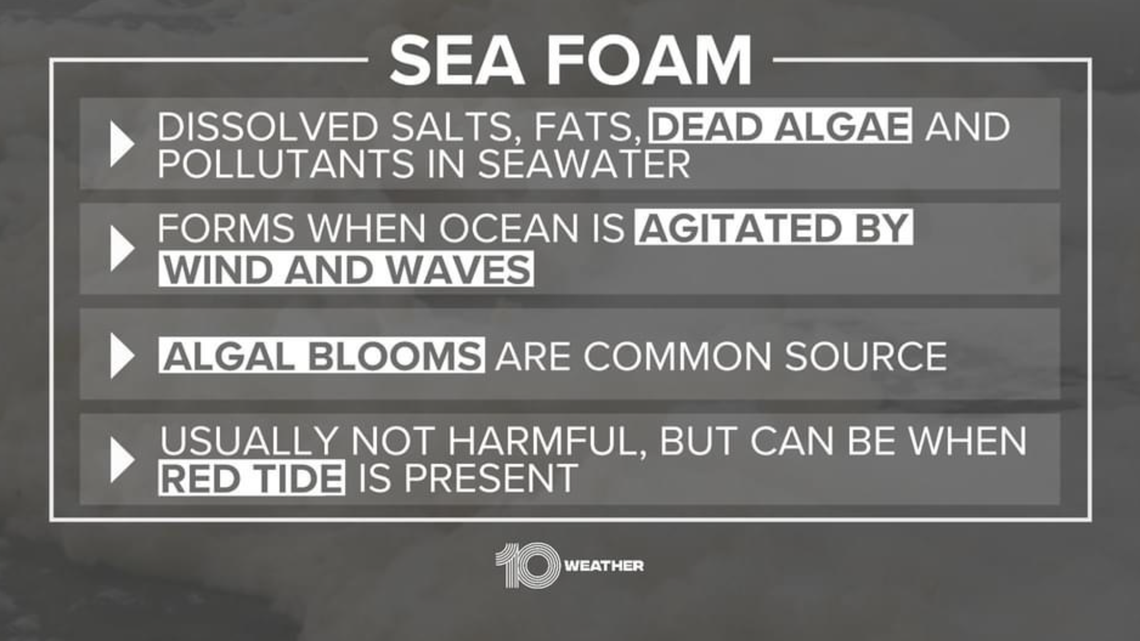REDINGTON BEACH, Fla. — While sea-foam that blows onshore might look fun to frolic in, you'll want to fight the urge -- especially as the Tampa Bay area is plagued by red tide.
The seawater around us is full of tiny particles made up of dissolved salts, dead algae, pollutants and organic matter, among other things. The National Oceanic and Atmospheric Administration says when the wind and waves agitate the ocean, all of those particles can create sea-foam.
"Algal blooms are one common source of thick sea foams. When large blooms of algae decay offshore, great amounts of decaying algal matter often wash ashore. Foam forms as this organic matter is churned up by the surf," NOAA wrote.
Most sea-foam is not harmful to humans and rather is "often an indication of a productive ocean ecosystem." But mix red tide into the equation and the foam can contain harmful toxins.
"The resulting aerosol can irritate the eyes of beachgoers and poses a health risk for those with asthma or other respiratory conditions," NOAA wrote.


Sea-foam impacts during red tide aren't just limited to humans, it can also have negative effects on your pets.
"If you are at the beach with your pets, do not allow them to play with dead fish or foam that may accumulate on the beach during or after a red tide," Florida Fish and Wildlife Conservation Commission warns.
Your four-legged family member could get sick from interacting with the sea-foam as it gets on their coat. FWC says the issue arises from dogs being known to lick themselves and in return will consume any toxins on their fur.
If your pet eats dead fish, it may get sick. If your pet swims in the red tide, wash it as soon as possible. Most dogs lick themselves after swimming and will consume any toxins on their fur.
FWC's red tide monitoring currently shows the harmful algae is impacting Pinellas, Hillsborough, Manatee and Sarasota counties in high concentrations, while Citrus and Pasco counties have low concentrations.
The most recent samples show high levels of red tide near Clearwater Beach, Indian Rocks Beach, Anclote Key, Longboat Key and Nokomis Beach.
To report a fish kill to the Florida Fish and Wildlife Conservation Commission (FWC), call the hotline at 800-636-0511. For more resources, click here.
You can also find different resources to check beach conditions here.

